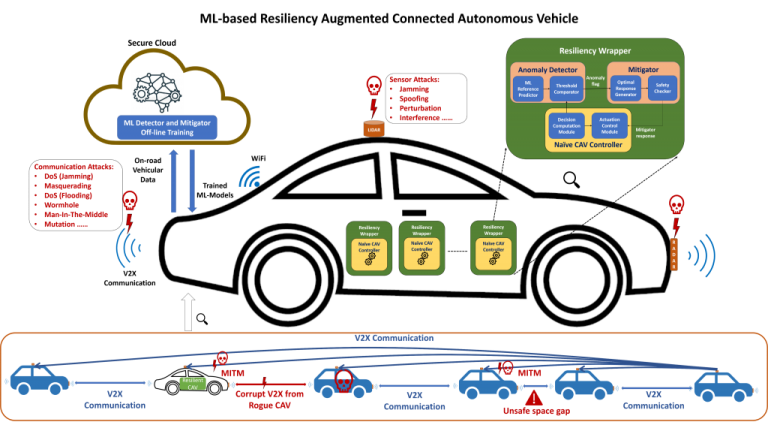By: Dr. Sandip Ray, Professor & Endowed IoT Term Professor, Department of Electrical & Computer Engineering, University of Florida

How would you feel if a hacker could remotely push a button that would cause your vehicle to veer off the highway into a ditch? Research over the last decade has shown that not only is this possible but it is actually depressingly easy for a trained hacker to do so. The reason is that as vehicles get infused with electronics and software to support and create various autonomous features, they are starting to look more like computers than as traditional cars. That also means that they are inheriting the problems that have plagued computers for decades – cyber-security. The only difference in this case is that vehicles are more like computers driving at 70 miles/hour and with people inside. Cyber-attacks on these systems can cause catastrophic accidents, cost human life, and bring down transportation infrastructure. As we increase autonomous features of vehicles and move toward self-driving cars, we are sorely in need for a robust vehicular design that is resilient to cyber-attacks.
A key feature of emergent vehicles is connectivity. Vehicles can “talk” to other vehicles as well as with the transportation infrastructure through sensors and inter-vehicular communications (called V2X) to enable smooth and efficient traffic flow and infrastructure utilization. Connected autonomous vehicle (CAV) applications are designed today include platooning, cooperative collision detection, cooperative on-ramp merging, etc. Connectivity, however, is also one of the most vulnerable components of autonomous vehicles and one of the crucial entry points for cyber-attacks. A key feature of such attacks is that they can be conducted without requiring an adversary to actually hack into the hardware/software or physical components of the target vehicle. They can simply send misleading or even malformed communications to “confuse” the communication or sensor systems.
Our team has been engaged in research over the last three years to address this crucial problem of cyber-resiliency of CAV applications. The research is led by my doctoral student, Srivalli Boddupalli, and includes support from National Science Foundation and collaboration with various automotive manufacturers including BMW and Toyota. A key result from the team is a unique AI-based resiliency architecture against arbitrary cyber-attacks on perception channels (e.g., communication and sensor channels). To our knowledge this is the first (and so far, the only) comprehensive resiliency framework for connected vehicle applications against arbitrary cyber-attacks. The architecture exploits recent advances in AI and machine learning to create a unique, on-board predictor to detect, identify, and respond to malicious communications and sensory subversions. A unique feature of the approach is that it can provide assured resiliency against a large class of adversaries, including unknown attacks. We have instantiated the approach on several CAV applications and developed an extensive experimental evaluation methodology for demonstrating such resiliency.